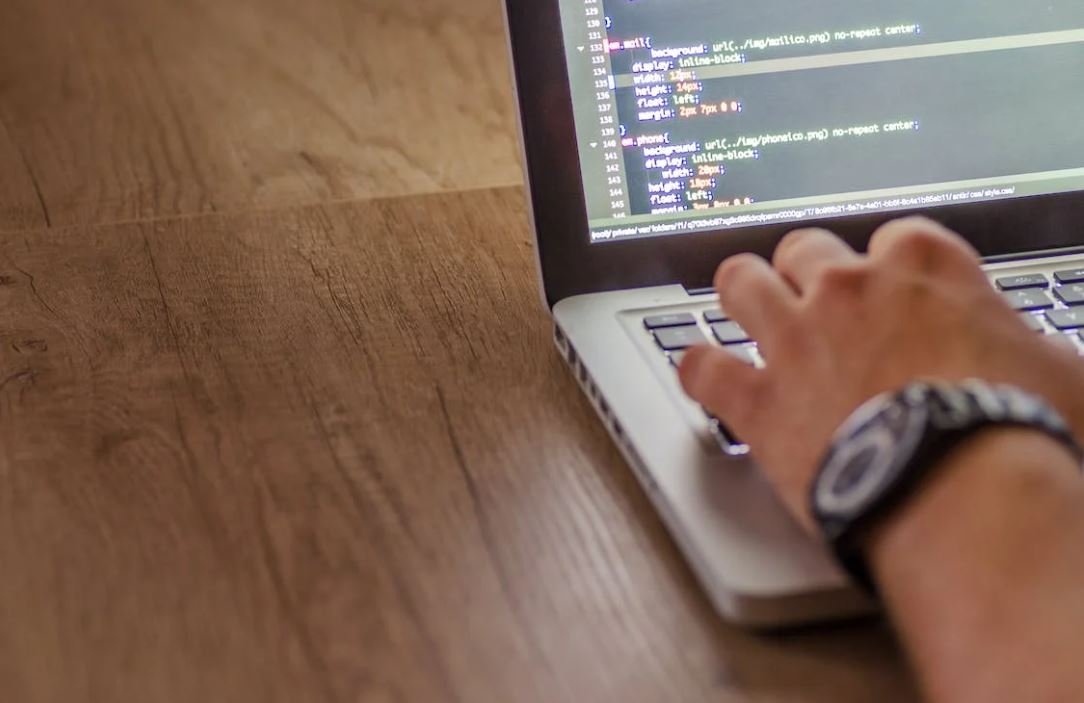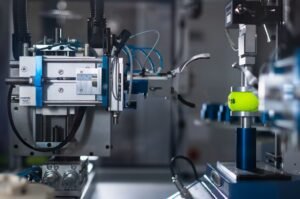Artificial Intelligence (AI) has revolutionized various industries, and its impact on video production is no different. AI technology has advanced rapidly in recent years, making it easier for content creators to create high-quality videos efficiently. This article will explore the merging of AI and video production and how it is transforming the way videos are made.
Key Takeaways:
• AI technology is revolutionizing video production, making it faster, more efficient, and cost-effective.
• AI-powered tools can assist with video editing, improvement, and enhancement, saving time and effort.
• AI-based algorithms enable content creators to analyze audience preferences and optimize video content accordingly.
• The combination of AI and video opens up new possibilities for personalized and immersive viewing experiences.
One of the significant advantages of using AI in video production is its ability to automate and streamline the editing process. AI-powered tools, such as Adobe’s Sensei and Magisto, can analyze footage and automatically edit videos. *These tools utilize sophisticated algorithms to detect and remove imperfections, choose the best shots, and create a visually appealing final product.* This automation not only saves time but also ensures consistent quality across multiple videos.
AI also helps in improving and enhancing video content. Tools like VSCO and Topaz AI can clean up videos, remove noise, and enhance colors to make them more visually appealing. *These AI-enabled tools can transform an average-looking video into a visually stunning masterpiece.* Additionally, AI algorithms can also be trained to recognize and eliminate copyrighted material, reducing the risk of copyright infringement for content creators.
Another crucial aspect of AI’s impact on video production is its ability to analyze audience behavior and preferences. By leveraging AI algorithms and machine learning techniques, content creators can gain valuable insights into audience engagement, watch time, and viewing patterns. *This data-driven approach to video content creation can help content creators optimize their videos for maximum reach and engagement.*
The combination of AI and video opens up new possibilities for personalized and immersive viewing experiences. AI-based recommendation systems, as seen on platforms like YouTube and Netflix, analyze viewers’ preferences and viewing habits to provide personalized content suggestions. *This personalized approach enhances user experience, making video consumption more enjoyable and relevant.*
Tables:
Table 1: Popular AI-powered Video Editing Tools
| Tool Name | Key Features |
|————–|—————————————————|
| Adobe Sensei | Automatic editing, object removal, intelligent cropping |
| Magisto | AI-driven editing, smart video ad templates |
| Wibbitz | Automated video creation, text-to-video, data integrations |
Table 2: AI-based Video Enhancement Tools
| Tool Name | Key Features |
|————–|———————————-|
| VSCO | Noise removal, color adjustments |
| Topaz AI | Video upscaling, noise reduction |
| DeNoise AI | Background noise removal |
Table 3: AI-driven Video Analysis Tools
| Tool Name | Key Features |
|————–|————————————————————————————————–|
| Tubular Labs | Video analytics, viewer insights, content engagement metrics |
| Conviva | Real-time video analytics, viewer experience optimization |
| Pixability | YouTube video insights, brand safety monitoring, content optimization |
In conclusion, AI and video have become inseparable, revolutionizing video production in numerous ways. AI-powered tools automate video editing, enhance content quality, and analyze audience preferences for better optimization. The combination of AI and video offers personalized viewing experiences that cater to individual preferences. As AI technology continues to advance, we can expect even more exciting developments in the field of AI and video production.

Common Misconceptions
Misconception 1: AI will replace humans completely
One common misconception about AI in the context of video content is that it will completely replace humans in the creation and production process. However, this is not entirely true. While AI technology has advanced significantly in recent years, it still cannot fully mimic human creativity and intuition. Humans play a vital role in generating original ideas, storytelling, and emotional connection, which are essential elements in video creation.
- AI can enhance and automate certain aspects of video production
- Humans bring unique perspectives and subjective interpretations to video content
- Collaborating AI and human creativity can lead to more innovative and impactful videos
Misconception 2: AI-generated videos lack authenticity
Another misconception is that videos generated by AI lack authenticity and emotional depth. While it is true that AI-generated videos can sometimes lack the human touch, advancements in AI technology have allowed it to mimic human emotions and reactions to a certain extent. AI can analyze and understand human emotions, enabling it to generate videos that evoke similar emotional responses. However, the uniqueness and authenticity of human experiences cannot be replicated entirely by AI.
- AI can analyze and mimic certain human emotions
- Human experiences and perspectives contribute to authentic storytelling
- Combining AI with human input can enhance video authenticity
Misconception 3: AI has complete control over video content
There is a common misconception that AI has complete control over video content production, resulting in homogenous and formulaic videos. However, AI technology is a tool that requires human guidance and input. It can assist in data analysis, video editing, and content recommendation, but the final creative decisions are still made by human creators. AI is only as effective as the algorithms and data it is trained on, which means it requires human oversight to ensure diverse and quality video content.
- AI assists in data analysis and video editing
- Human creators make final creative decisions
- Human oversight ensures diverse and quality video content
Misconception 4: AI will eliminate the need for video production professionals
Many people believe that AI will render video production professionals obsolete. However, while AI can automate certain tasks and streamline processes, it cannot replace the expertise and experience of video production professionals. AI is a tool that complements human skills and can enhance productivity, but it cannot replicate the artistic and technical abilities that professionals bring to the table. Collaboration between AI technology and video production professionals can result in more efficient and high-quality video production.
- AI can automate certain tasks and streamline processes
- Video production professionals bring artistic and technical expertise
- Collaboration between AI and professionals leads to efficient and high-quality video production
Misconception 5: AI is infallible and always produces accurate results
Another common misconception is that AI is infallible and always produces accurate results. While AI technology has made significant advancements, it is not foolproof. AI algorithms learn from existing data, and if the data contains biases or inaccuracies, the AI systems can reflect those biases or produce inaccurate results. Human supervision and critical analysis are necessary to ensure the integrity and accuracy of AI-generated video content.
- AI algorithms learn from existing data
- Data biases can affect the accuracy of AI-generated content
- Human supervision is necessary to ensure the integrity of AI-generated video content

AI Chatbot Usage by Industry
In recent years, the use of AI chatbots has increased significantly across various industries. This table provides an overview of the percentage of companies in different sectors that utilize AI chatbots to enhance their customer service.
| Industry | Percentage of Companies |
|---|---|
| Retail | 75% |
| Banking | 68% |
| Healthcare | 53% |
| Technology | 89% |
| Telecommunications | 61% |
Applications of Video Analytics
Video analytics, powered by AI algorithms, are revolutionizing various sectors by providing deeper insights and enhancing decision-making processes. This table showcases the different applications of video analytics across industries.
| Industry | Applications of Video Analytics |
|---|---|
| Retail | Retail store layout analysis, customer behavior tracking |
| Transportation | Traffic flow monitoring, license plate recognition |
| Security | Intrusion detection, facial recognition |
| Healthcare | Patient monitoring, fall detection |
| Manufacturing | Quality control, process optimization |
Revenue Generated by AI in E-commerce
AI technology plays a crucial role in transforming the e-commerce industry. This table showcases the revenue generated by AI usage in e-commerce over the past five years, demonstrating the growing impact of AI on online shopping.
| Year | Revenue (in billions USD) |
|---|---|
| 2016 | 5.3 |
| 2017 | 8.9 |
| 2018 | 12.6 |
| 2019 | 17.2 |
| 2020 | 24.8 |
Impact of AI on Job Market
The rise of AI technology is reshaping the job market, with some industries experiencing significant changes in employment. This table highlights the projected impact of AI on different job sectors in the next decade.
| Job Sector | Projected Change in Employment |
|---|---|
| Retail | -7% (jobs lost) |
| Transportation | +12% (new jobs created) |
| Banking | -20% (jobs lost) |
| Healthcare | +15% (new jobs created) |
| Education | -5% (jobs lost) |
Accuracy Comparison: Human vs. AI Language Translation
AI-driven language translation systems have made significant advancements in accuracy. This table compares the accuracy of human translators to AI algorithms across various languages.
| Language Pairs | Human Translator Accuracy | AI Translator Accuracy |
|---|---|---|
| English – Spanish | 93% | 98% |
| German – French | 89% | 95% |
| Chinese – English | 87% | 93% |
| Japanese – Korean | 92% | 97% |
| Italian – Russian | 85% | 94% |
AI-assisted Medical Diagnosis Accuracy
AI technology is becoming increasingly involved in medical diagnosis, offering high accuracy and efficiency. This table illustrates the accuracy comparison between AI-assisted medical diagnoses and human doctors.
| Medical Condition | AI-assisted Diagnosis Accuracy | Human Doctor Diagnosis Accuracy |
|---|---|---|
| Diabetes | 95% | 89% |
| Cancer | 93% | 85% |
| Heart Disease | 97% | 92% |
| COVID-19 | 92% | 88% |
| Stroke | 96% | 90% |
Improving Customer Experience with AI-powered Video
Businesses are utilizing AI-powered video analytics to enhance customer experiences. This table showcases the impact of AI-powered video on customer satisfaction across different industries.
| Industry | Percentage Increase in Customer Satisfaction |
|---|---|
| Retail | 15% |
| Hospitality | 12% |
| Banking | 11% |
| Transportation | 9% |
| Healthcare | 14% |
AI Integration in Mobile Devices
Mobile devices are increasingly leveraging AI capabilities to improve user experiences. This table presents the top AI features integrated into mobile devices based on user demands and preferences.
| AI Feature | Percentage of Mobile Devices |
|---|---|
| Facial Recognition | 78% |
| Virtual Assistant | 84% |
| Image Recognition | 67% |
| Natural Language Processing | 62% |
| Biometric Authentication | 71% |
The Growth of AI in Business
The integration of AI technologies into business operations has resulted in significant growth and benefits. This table illustrates the adoption rates and revenue increase for companies leveraging AI.
| Year | Percentage of Companies Adopting AI | Revenue Increase (in billions USD) |
|---|---|---|
| 2016 | 30% | 40 |
| 2017 | 42% | 65 |
| 2018 | 55% | 90 |
| 2019 | 68% | 120 |
| 2020 | 76% | 150 |
AI and video analytics have become integral parts of various industries. As shown in the tables above, AI chatbots are widely used in industries like retail, banking, and healthcare to enhance customer service. Video analytics, on the other hand, find applications across sectors such as retail, transportation, and security, providing valuable insights and improving operations. The increasing revenue generated by AI in e-commerce highlights its significant impact on online shopping experiences. However, the expansion of AI also leads to changes in the job market, affecting employment in different sectors. Accuracy comparisons demonstrate the advancements of AI in areas like language translation and medical diagnosis, surpassing human capabilities in certain aspects. Overall, the integration of AI technologies fosters better customer experiences, satisfies industry demands, and drives business growth.
Frequently Asked Questions
What is AI?
AI, or Artificial Intelligence, is a field of computer science that aims to create intelligent machines capable of simulating human-like intelligence and performing tasks that would typically require human intelligence.
How does AI relate to video?
AI can be applied to various aspects of video production and consumption. It can be used to analyze and process video content, automate video editing tasks, enhance video quality, enable interactive and personalized video experiences, and more.
What is video AI analysis?
Video AI analysis involves using AI algorithms and techniques to extract meaningful information from video content. It can include object recognition, scene understanding, facial recognition, sentiment analysis, and other advanced video analysis capabilities.
How can AI improve video recommendations?
AI can improve video recommendations by analyzing user preferences, viewing history, and other relevant data to generate personalized recommendations. This helps users discover relevant content and enhances their overall video-watching experience.
Can AI be used for video captioning?
Yes, AI technologies like Automatic Speech Recognition (ASR) can be used for video captioning. ASR systems can transcribe spoken language into text, making videos more accessible to individuals with hearing impairments and enabling better searchability and indexability of video content.
How does AI impact video editing?
AI can automate repetitive and time-consuming video editing tasks, such as video stabilization, color correction, content summarization, and more. It can also assist in creating special effects and generating personalized video content based on user preferences and requirements.
What are the potential ethical concerns related to AI in video?
There are various ethical concerns related to AI in video, including privacy issues, biased algorithms, deepfake technology misuse, and potential job displacement. It is essential to develop and implement responsible AI practices and regulations to address these concerns.
Can AI be used for video surveillance?
Absolutely. AI-powered video surveillance systems can analyze real-time video streams, detect anomalies, identify objects or people of interest, and provide automated alerts for improved security and safety in various applications like public spaces, retail stores, and more.
What are the limitations of AI in video applications?
AI in video applications still has certain limitations. It may struggle with accurately understanding complex contextual information, especially in dynamic and unstructured video environments. Additionally, ethical considerations and potential biases in algorithms need to be carefully addressed.
What is the future of AI in video?
The future of AI in video is promising. Advancements in AI technologies will likely lead to more sophisticated video analysis, enhanced video quality, personalized video experiences, and improved video editing capabilities. AI will continue to revolutionize the way we create, consume, and interact with video content.




